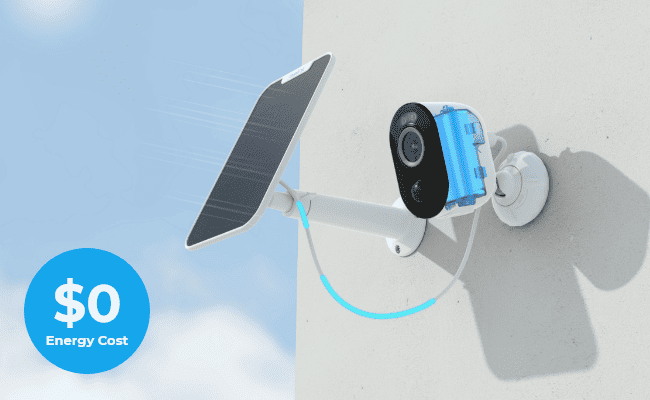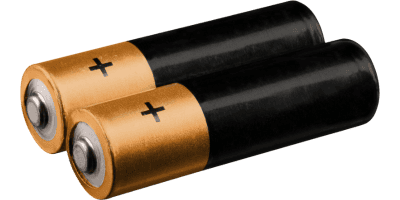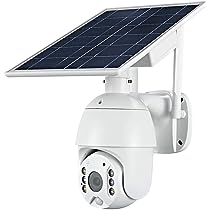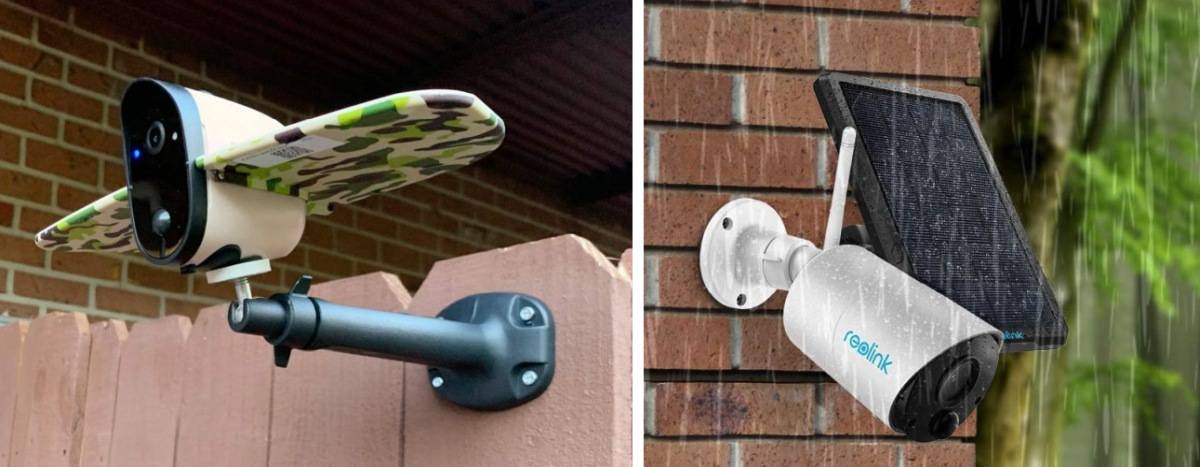How do solar-powered security cameras compare to traditional one?
With todays technology, solar-powered security camers are indeed a good option to their wired equivalents. By examining the benefits and limitations of both options, you will gain a comprehensive understanding of the pros and cons, enabling you to make an informed decision when it comes to securing your premises. So here we go into this comparison of solar-powered security cameras and traditional ones.
Solar-Powered Security Cameras vs Traditional Ones
Cost
Initial Cost
When it comes to the initial cost, solar-powered security cameras
might appear to be more expensive than traditional ones. However, it’s essential to take into consideration
the long-term benefits they offer. While
traditional cameras might seem more affordable at first, they
usually require additional expenses such as wiring and ongoing electricity costs. In addition to that, modern manufacturing technologies have brought the cost of “wireless” security cameras down to the point of very little difference in “like” quality comparisons. Especially, if you considers the amount of time and labor to deal with the wiring of the system.
Long-term Cost
One significant advantage of solar-powered security cameras is their ability to save you money in the long run. Once installed, these cameras harness solar energy, eliminating the need for constantly running electricity. With traditional cameras, you must consider the recurring costs for electricity consumption.
Solar-powered cameras provide a cost-effective and eco-friendly solution that can greatly reduce your long-term expenses.

Power Source
Battery-Powered vs Solar-Powered Cameras
An important distinction must be kept in mind when referring to “wireless” security cameras. Keep in mind that “wireless” means only that they are not “wired” directly to an external power source.
All “wireless” security cameras have an internal battery. Which MUST be recharged in some way. If a “wireless” security camera is not solar powered, then the battery will have to be removed and recharged periodically. Some brands of “wireless” cameras offer battery life expectency of upto 2 years of continuous use before recharging. This can be challenging to keep up with. Which is why
we believe that “solar-powered” security cameras are a huge advantage. For the rest of this article the terms “wireless” and “solar powered” will be used interchangeably.
Solar-Powered Cameras
Solar-powered security cameras rely on sunlight as their primary power source. They are equipped with solar panels that convert sunlight into electricity, storing it in batteries to operate during low-light or nighttime conditions. They can charge the batteries even when overcast or cloudy. Although this varies by manufacturer, the cameras battery capacity and the panels ability to convert sunlight to useable energy,
will allow for continuous operation even during days and weeks of rainy, cloudy conditions. This renewable energy source ensures continuous surveillance without being dependent on an electrical grid.
Traditional Cameras
In contrast, traditional security cameras are typically powered by electricity from the grid or batteries. While this provides reliable power, it comes with the drawback of ongoing electricity costs, especially if the cameras are required to operate continuously. Additionally,
traditional cameras may be susceptible to power outages, rendering them useless during those times.
 vs.
vs. 
Installation
Solar-Powered Cameras
Installation of solar-powered security cameras is relatively easier and more flexible compared to traditional cameras. With solar cameras,
you are not limited to specific locations near electrical outlets. You can install them anywhere that receives an adequate amount of sunlight. This flexibility grants you the freedom to position cameras strategically for optimal surveillance coverage.
Traditional Cameras
Traditional cameras, on the other hand,
require wiring and connection to an electrical outlet or a power source. This limited installation flexibility can be challenging, especially if you have specific spots you want to cover that are far from power sources. The installation process may also require professional assistance to ensure proper wiring and connectivity.
Maintenance
Solar-Powered Cameras
Solar-powered security cameras typically require minimal maintenance. Once properly installed, they are designed to be self-sufficient, charging their batteries through solar panels. Regular maintenance usually involves inspecting the solar panels for debris or dirt that may obstruct their efficiency. Cleaning the panels and ensuring they receive sufficient sunlight is usually enough to keep the cameras running smoothly.
Traditional Cameras
Traditional cameras may require more frequent maintenance as they rely on electricity. This involves
checking wirings, power connections, and ensuring there are no power interruptions. Traditional cameras may also require battery replacements or recharging, depending on their power source. These additional maintenance tasks may lead to higher costs and increased effort over time.
Flexibility and Mobility
Solar-Powered Cameras
Solar-powered security cameras offer remarkable flexibility compared to their traditional counterparts. Since they are not reliant on electrical outlets or wiring, they
can be easily relocated as needed. This flexibility allows you to adjust the surveillance coverage according to changing circumstances, making them an ideal choice for temporary or remote locations.
Traditional Cameras
Traditional cameras, due to their reliance on power outlets and wiring, lack the same level of flexibility as solar-powered cameras.
Moving them requires rewiring and reconnecting to power sources, which can be time-consuming and costly. If you need to relocate these cameras frequently, they might not be the most convenient option.
Durability and Weather Resistance
Solar-Powered Cameras
Solar-powered security cameras are designed with durability and weather resistance in mind. These cameras are often built to withstand extreme temperatures, heavy rain, snow, and even dust and debris.
They are purposefully created for outdoor use and are equipped with weatherproof casings, making them reliable in various environmental conditions. Be sure to check the IP ratings to know exactly what dust/water resistance a particular model has.
Traditional Cameras
While traditional cameras also come with weatherproof variants, they might not be as resilient as solar-powered cameras.
Standard traditional cameras may require additional protection, such as housing or covers, to shield them from harsh weather conditions. This extra layer of protection increases the initial cost and ongoing maintenance requirements. Again check IP ratings.
Video Quality
Solar-Powered Cameras
Solar-powered security cameras nowadays offer high-definition video quality, rivaling the capabilities of traditional cameras. Advancements in solar camera technology ensure that you can capture clear and detailed footage for better identification purposes. The video quality provided by solar-powered cameras is often more than sufficient for most surveillance needs.
Traditional Cameras
Traditional cameras have long been known for their reliable video quality. However, advancements in solar camera technology have allowed solar-powered cameras to close the gap and offer comparable video quality.
Traditional cameras may still have an edge in terms of specific models or features, but solar-powered cameras have greatly improved their video capabilities over the years.
Features
Solar-Powered Cameras
Solar-powered security cameras now come equipped with numerous features to enhance their functionality. These
features can include motion detection, night vision, two-way audio, remote access, and even integration with smart home systems. Solar cameras have evolved to provide a comprehensive surveillance solution that meets the demands of modern security requirements.
Traditional Cameras
Traditional cameras also offer a wide range of features, with some models boasting advanced functionalities. These features can include pan, tilt, and zoom capabilities, built-in storage options, and compatibility with video management systems.
Traditional cameras have been around longer, allowing for a more extensive selection of features based on specific needs.
Integration and Connectivity
Solar-Powered Cameras
Solar-powered security cameras are designed with integration and connectivity in mind. They often come with wireless connectivity options, allowing easy connection to your home network or cloud storage. Some solar camera models also offer compatibility with popular smart home systems, providing seamless integration and convenient control over your surveillance system. And incase your wondering what happens if the internet goes down,
most of today’s wireless security cameras have a SD card or equivalent that continues to record even if it looses signal or internet access. Giving you the piece of mind of continues coverage.
Traditional Cameras
Traditional cameras, depending on the model,
can also offer integration and connectivity options. However, these cameras may require additional wiring or adapters to connect to your network or other devices.
The integration process might be more complex and may require technical expertise or professional assistance.
Environmental Impact
Solar-Powered Cameras
Solar-powered security cameras have a considerable environmental advantage over traditional cameras. By harnessing solar energy, they help reduce reliance on non-renewable energy sources, effectively lowering carbon emissions. The
use of solar-powered cameras promotes sustainability and aligns with environmentally conscious practices.
Traditional Cameras
Traditional cameras, powered by electricity or batteries, contribute to energy consumption and the associated environmental impact. These cameras
rely on electrical power grids that may depend on non-renewable energy sources. By choosing solar-powered cameras over traditional ones, you make a positive impact on the environment by minimizing carbon emissions and promoting renewable energy use.
Conclusion
In conclusion,
solar-powered security cameras offer numerous advantages over traditional ones. While the initial cost may appear higher,
the long-term savings and benefits outweigh the upfront investment. Solar-powered cameras are
flexible, easy to install, require minimal maintenance, and provide high-quality video footage. They are environmentally-friendly, promote sustainability, and offer a diverse range of features. When comparing solar-powered and traditional security cameras,
it becomes clear that solar-powered cameras are a reliable, cost-effective, and eco-friendly choice for ensuring your safety and security. 
 vs.
vs. 
